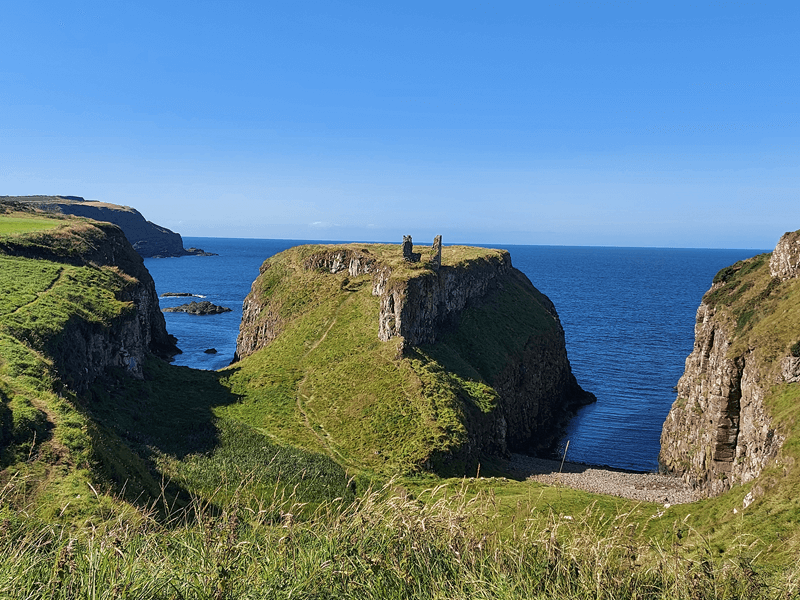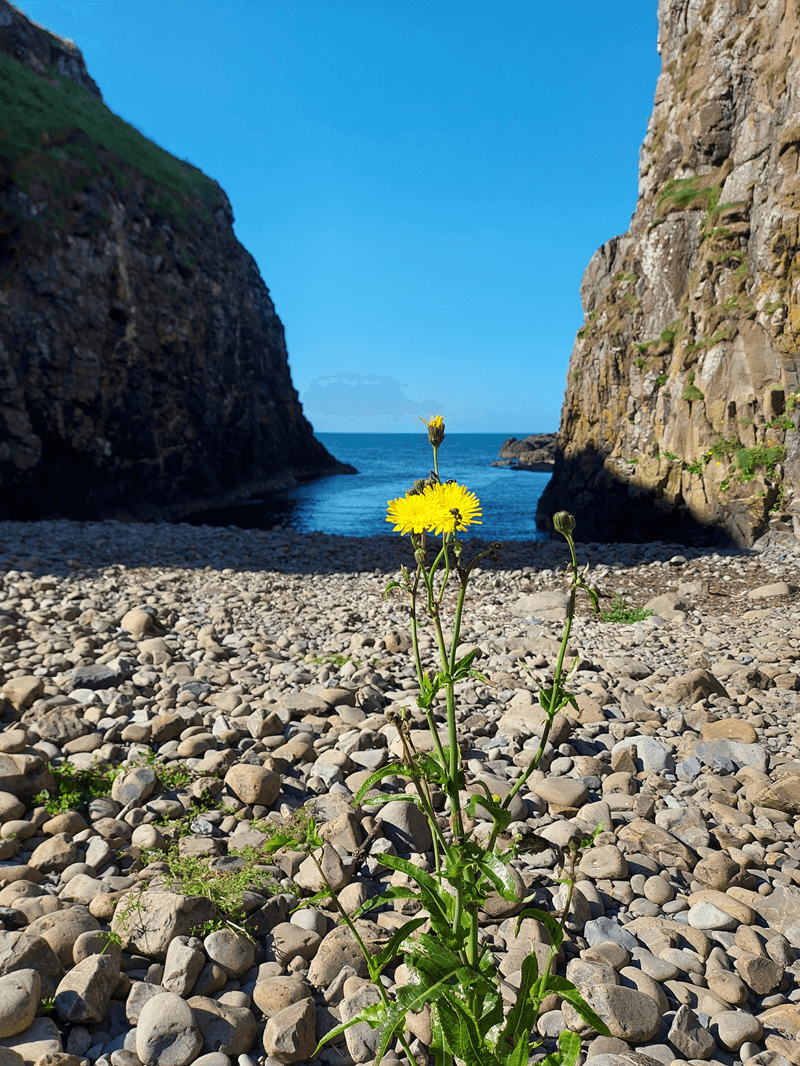History

Recorded in the Irish Annals as Dun Sobhairce (Fort of Sobhairce), Dunseverick Castle is perched on the Causeway coastline on a steep basalt stack, close to the Giant’s Causeway [1, 2].
When the first fortification was built on this site is unknown [3]. Perhaps Dunseverick Castle was first fortified by an ancient chieftain, Sobhairce (from whom it takes its name), from around the 5th century [2].
Maybe Saint Patrick visited Dunseverick castle in the 5th century and here he baptized Olcán, a local man who later became a bishop of Ireland [1].
In the 6th century, Dunseverick castle was the seat of Fergus Mor MacEirc (Fergus the Great), King of Dalriada (Dál Riada Gaelic kingdom) and great-uncle of the High King of Ireland, Muirceartaigh (Murtagh) MacEirc [1, 2]. During this time, the castle served as the departure point of the legendary coronation stone, the Lia Fail, used to crown all the kings of Ireland [3].
According to the Irish Annals, the stone fort was attacked by Viking raiders in 871 and 924 [1-3].
It is stated in [1, 2] that from around 1250 to 1350 the castle was the centre of the Earls of Ulster, before becoming the stronghold of the O’Cahans first and later the McDonnells from 1560.
During the Irish uprising, the castle was destroyed by Protestant forces leaded by General Robert Monro in 1642 and his Cromwellian troops in the 1650s, and today only the ruins of the gatelodge remain [1-3].
A small tower survived until 1978, when some of the rockface fell into the sea, but the remaining structure was repaired and stabilised [1, 2].
References
- [1] Wikipedia, Dunseverick Castle
- [2] National Trust, Dunseverick Castle
- [3] The Irish Road Trip, Dunseverick Castle: An Often-Missed Ruin On The Causeway Coast







